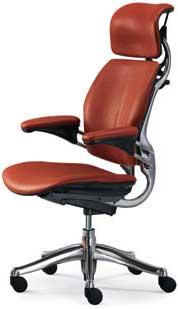 Sciatica is very painful medical condition in which the patient experiences extreme pain and tingling sensations in his back, hip, legs and thighs. The pain is caused as a result of pressure exerted on the nerves, either due to any inflammation in the vertebra or the narrowing of the spinal canal. Piriformis syndrome, lumber spinal stenosis and spinal disc herniation are common causes of sciatica pain in individuals. Chiropractic treatment is highly effective for relieving the patients of the painful condition.
Sciatica is very painful medical condition in which the patient experiences extreme pain and tingling sensations in his back, hip, legs and thighs. The pain is caused as a result of pressure exerted on the nerves, either due to any inflammation in the vertebra or the narrowing of the spinal canal. Piriformis syndrome, lumber spinal stenosis and spinal disc herniation are common causes of sciatica pain in individuals. Chiropractic treatment is highly effective for relieving the patients of the painful condition.
Why Is Prompt Identification And Treatment Important?
It is very important for patients to recognize the symptoms and seek professional medical assistance for their sciatica condition. The doctor takes prompt prescribed tests to identify the cause of the sciatica pain in order to focus his attention on the specific treatment required for the condition.
If a patient does not seek medical assistance for his sciatica problem, it may result in exaggerating his condition with the period of time. A number of possible problems can arise for the patient besides the continuous pain in the back and the hip region.
Permanent Nerve Damage
Patients who do not seek prompt medical help for their sciatica run a high risk of suffering from permanent nerve damage. In case of a permanent damage to the sciatica nerve, the patient will experience excruciating pain in the back and legs, which will not be alleviated to a satisfactory level, even with the use of pain relieving medication.
The different treatment methods like water and physical therapy become extremely painful for the patient because of his severe nerve damage.
Paralysis in the Affected Limb
The patient experiences a loss of feeling in the affected limb, which in some cases also leads to difficulty in movement, and ultimately paralysis. The affected leg becomes devoid of all sensation and movement, hampering the patient already troubled with the excruciating pain.
Loss of Bladder Control
Patients who do not get medical treatment for their sciatica problem can experience a loss of control in their bladder and bowels. This adds to the problems already faced by the patient while dealing with his sciatica condition.
A pressurized sciatica nerve causes severe pain, tingling and numbing sensations in the legs and thighs, and cramps along with fever. Patients should seek prompt medical assistance for the correct identification and treatment of sciatica before the condition becomes incurable. Chiropractic treatment is considered as very effective for the treatment of sciatica pain in individuals.
Image used under Creative Commons Licensing: Leg pain by The Clear Communication People

 Most people know that insufficient calcium and vitamin D can lead to worsening osteoporosis. It seems to be a simple solution, take vitamin D with your calcium and you’ll stave off the worst of osteoporosis.
Most people know that insufficient calcium and vitamin D can lead to worsening osteoporosis. It seems to be a simple solution, take vitamin D with your calcium and you’ll stave off the worst of osteoporosis.

